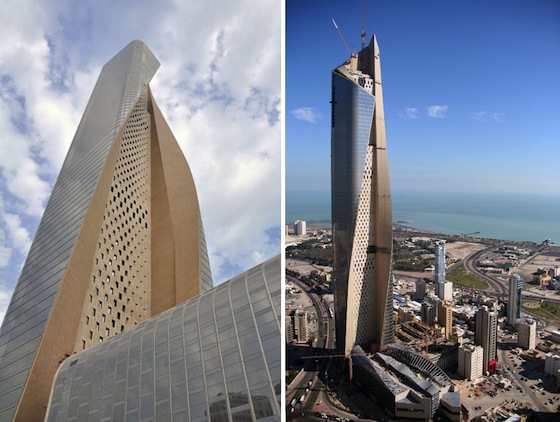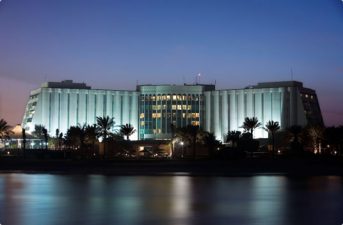 The Al Hamra Firdous Tower in Kuwait City is the world’s 13th largest
The Al Hamra Firdous Tower in Kuwait City is the world’s 13th largest
Kuwait is now competing with Saudi Arabia and the United Arab Emirates to build the biggest, baddest skyscrapers. The recently completed Al Hamra Firdous Tower also called the “Enshrouded Figure” is 412 meters tall and is ranked by the Council on Tall Buildings as the world’s 13th tallest. Only one other building in Kuwait has found a spot among the world’s 100 tallest buildings: at 300 meters tall, the Arraya Tower garnered 56th place. Step in to learn more about Skidmore, Owings, and Merrill’s (SOM) latest project in the Middle East.
The Enshrouded Figure
As far as Babylonian towers go, we have to admit that Al Hamra is quite handsome. Its northern, eastern, and western glass walls wrap around until they almost touch at the flat southern face.
This shields the interior from the sun and reduces the mechanical load.
Although experts rue the day that architects began using glass in the desert, this variety is shaded, allowing the inhabitants to enjoy an extraordinary view across the Gulf without baking.
The existing buildings at Al Hamra’s base look like toys in comparison; those occupants are no doubt miffed at being dwarfed by the cloaked giant.
Mixed-use development
Mixed use development is becoming increasingly common. By combining multiple functions in one building, it is possible to reduce transportation requirements, and thereby reduce carbon emissions.
As such, SOM, one of the world’s most accomplished design firms, has meshed both residential and office space, which is accessed via a 20 meter high lobby.
Tug-of-war
Not long ago we posted a story about a new green-roof school planned for Kuwait that will promote alternative learning – a symbol that educators understand the importance of preserving natural resources and redeveloping a nascent agricultural community.
It appears that like elsewhere in the Middle East and North Africa, this oil-rich country is caught in a tug-of-war: on one hand efforts are being made to move the country in a more sustainable direction. On the other hand, the temptation of wealth and power numbs the potential for any kind of eco-consciousness.
As the IUCN plans to demonstrate at the upcoming World Water Forum in France, nature will prevail. And if we pay attention to these longstanding processes, we might as well.
images SOM | © Pawel Sulima
More on Giant Buildings in the Middle East:
New Green Roofed School in Kuwait Will Promote Agricultural Learning
Sustainable Architecture Saudi-Style: King Abdullah Financial District
Architect From Fortune 500 Company Criticizes Middle East’s “Glass Monsters”




Comments are closed.